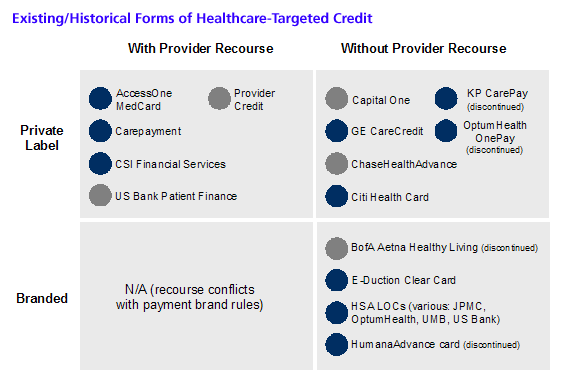Healthcare Credit Redux
Abstract
Rising costs in healthcare are increasing the need for healthcare banking products, including healthcare credit. Although an exploration of consumer credit could be considered out of touch with the economic realities of 2009, now is the time for financial institutions and technology vendors to lay the groundwork for deeper involvement in this historically unaddressed consumer credit sector.
Until recently, the need to borrow for healthcare was unnecessary, given that health plan benefit design protected consumers from large financial outlays. However, this protection is rapidly eroding. The rise of high-deductible health plans is resulting in a massive cost shift within the healthcare market, as consumers take on the financial burden previously held by employers and health plans. As out-of-pocket (OOP) expenses outpace savings, consumers will have an increasing need to borrow to pay medical bills and address unexpected cash flow issues. By 2014, Celent estimates that the incremental OOP expense-to-savings gap will be $253 per median household. Put another way, by 2014, there will be an aggregate gap of $32 billion calling out for a credit solution.
The use of credit in the healthcare space is certainly nothing new; most of it takes the form of general purpose credit cards, with credit lines that are increasingly out of reach for large segments of the population. Healthcare-specific consumer credit programs do exist, but they have not had a major impact on the market for nonelective healthcare financing. As such, existing credit products targeted at healthcare will have to evolve, or entirely new credit product configurations will be required.
Report highlights include:
- The median household OOP expense is expected to rise from $2,515 in 2009 to $3,301 in 2014, a 31% increase. By 2014, these expenses are expected to consume 6.6% of the median household gross income.
- Future healthcare credit targeted at the poor credit score populations will either have to be low- or no-risk credit products; the recourse and payroll deduction models offer the clearest path to product development.
- Going forward, healthcare credit targeted at creditworthy populations will need to generate value via a trade-off between reduced healthcare provider receivables aging/bad debt and card spending rebates.

"Many existing forms of healthcare credit certainly have their weaknesses. Healthcare credit is typically for elective care only. Also, while credit is often not available to people who need it the most, consumers who are relatively creditworthy are not enticed by existing healthcare credit products," says Red Gillen, senior analyst with Celent's banking group and author of the report. "For healthcare-targeted credit products to succeed, they need to be nearly universally accessible. For the higher credit risk population, this means the issuance of credit not based on risk scoring. For the creditworthy population, financial institutions need to deliver a credit product that beats general purpose cards at the reward/rebate game."
This report provides an analysis of the underlying factors and trends behind the need for changes in healthcare credit products. An overview of historical and existing products in the healthcare credit space is also included.
The report contains 45 pages and 24 figures and one table. A table of contents is available online.
Members of Celent's Healthcare Banking research service can download the report electronically by clicking on the icon to the left. Non-members should contact info@celent.com for more information.

